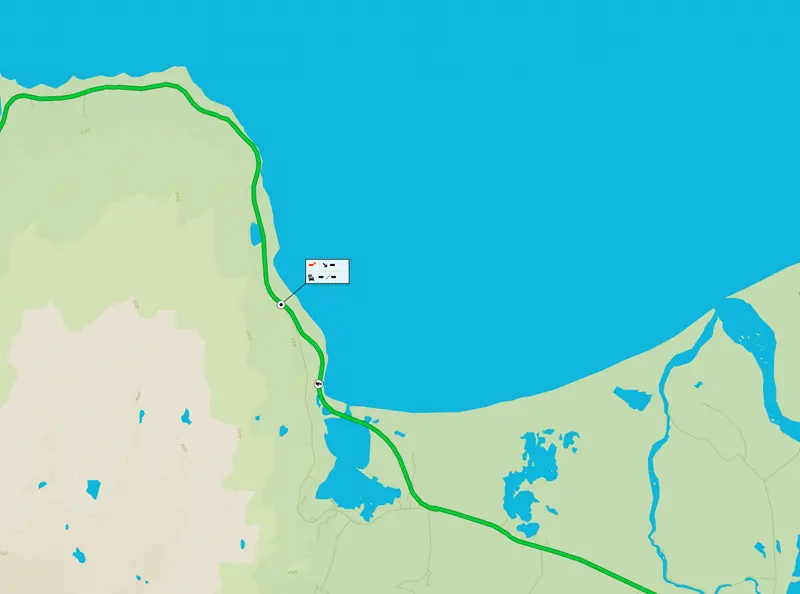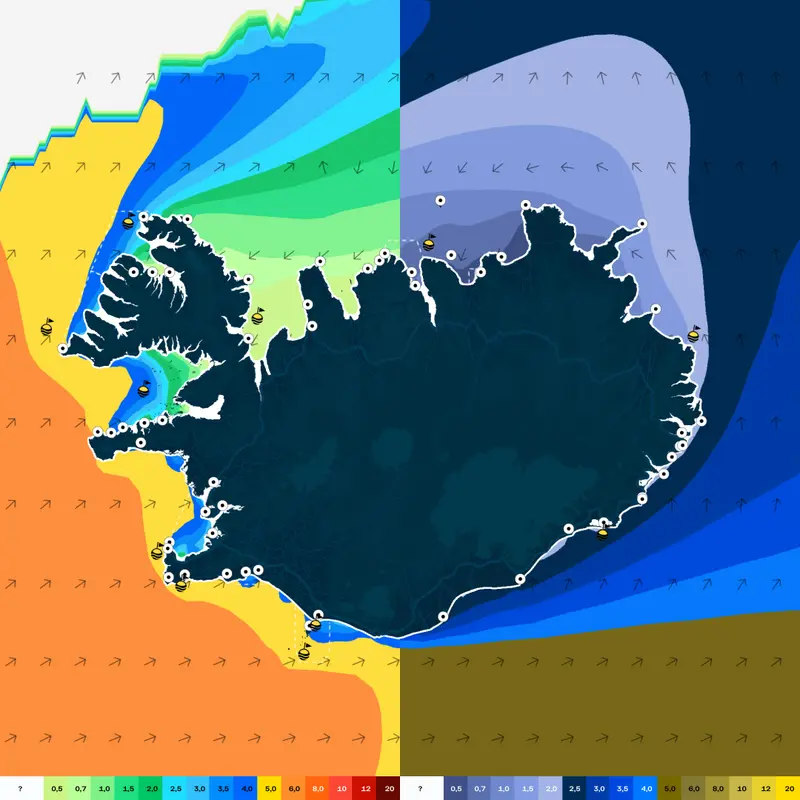The Icelandic Highland Interior
The Icelandic highlands are home to some of the most pristine natural landscapes available anywhere in the world. The IRCA plays a key role in preserving said landscape through maintenance and strict monitoring of the few routes available to travellers looking to explore.
The Icelandic Highland Interior
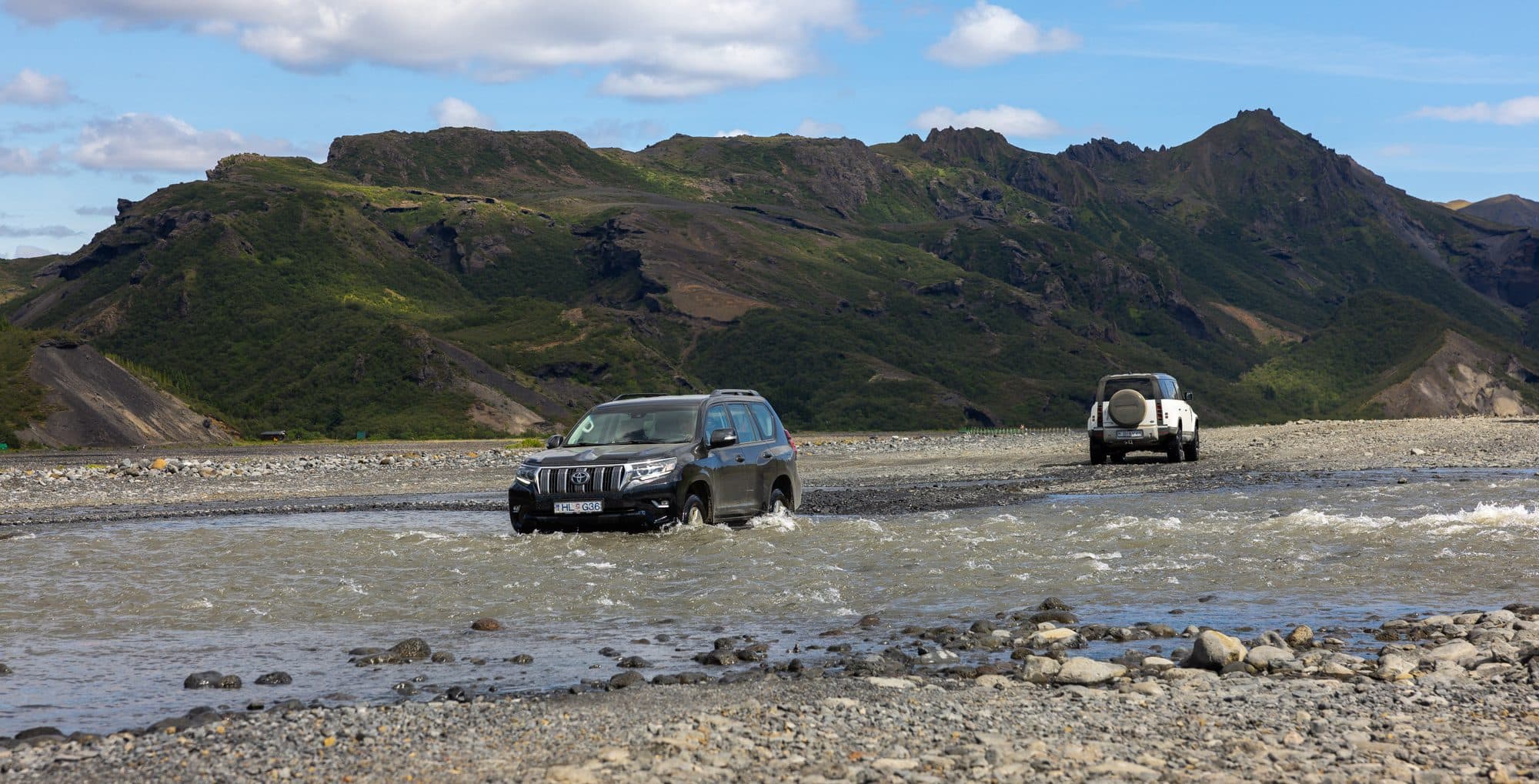
The Highland Interior
The highland interior is a contiguous landmass in the heart of Iceland located more than 500 m above sea level.
Accurate measurements are hard to come by, but the Natural Science Institute of Iceland (NSII) states that roughly 40% of the island’s total landmass, 42,700 square kilometres, falls under the definition of the highland interior. An overwhelming majority of the area is considered uninhabitable due to soil deficiency — the soil being mostly volcanic ash — difficult terrain, harsh weather and remoteness.
Despite this, low-lying plant life, bird species and some land animals can be found within the highland area:
- Moss heaths and other heathlands are relatively common within the interior. The same can be said for wetlands, to some extent, whilst grasslands and meadows are sparsely located, but nevertheless present within the interior. Wooded areas and shrublands are almost entirely absent within the interior.
- More than 30 species of bird have been documented to nest in the highlands, e.g. the golden plover and snow bunting. Great care must be taken to preserve these nesting lands for the species that nest there, some of whom are vulnerable, per the NSII Red List of Birds.
- The most common land animal present within the highland interior is the arctic fox, the only land animal that arrived in Iceland without human assistance. Iceland’s sparse reindeer population, limited to east Iceland, is known to often occupy the highland region west of Snæfell, north of Vatnajökull.
Much of the highland interior is part of the Vatnajökull national park, the European continent’s largest national park. In 2019, efforts were made to expand the park so that it would include the entirety of the highland interior, more than doubling its size, but these plans ultimately fell through.
Notable natural features
Five of Iceland’s largest glaciers—Vatnajökull, Langjökull, Hofsjökull, Mýrdalsjökull, and Eyjafjallajökull—are either entirely or partially located within the highland interior. These glaciers dominate the landscape, shaping deep valleys and glacial rivers that flow into surrounding lowlands. The highlands are also home to other prominent natural landmarks, including Snæfell, the tallest non-glacier mountain in Iceland; Herðubreið, often called the queen of Icelandic mountains for its distinctive flat-topped shape; and Hekla, one of the country’s most famous and historically significant volcanoes.
Þórisvatn, Iceland’s largest freshwater lake, is located in the interior, roughly equidistant between Mýrdalsjökull and Hofsjökull. The country’s longest river, Þjórsá, also runs through the highlands for about 230 km, beginning at Hofsjökull and flowing south to the Atlantic. Both the lake and the river are key natural features that define the interior landscape.
The highlands are dotted with extensive lava fields, such as Ódáðahraun north of Vatnajökull, Iceland’s largest volcanic desert, covering around 4,000 square km. Within Ódáðahraun lie the calderas of Askja, an increasingly popular tourist destination known for its dramatic scenery and large main caldera. The combination of glaciers, mountains, lakes, rivers, and lava fields makes the highland interior one of Iceland’s most unique and visually striking regions.
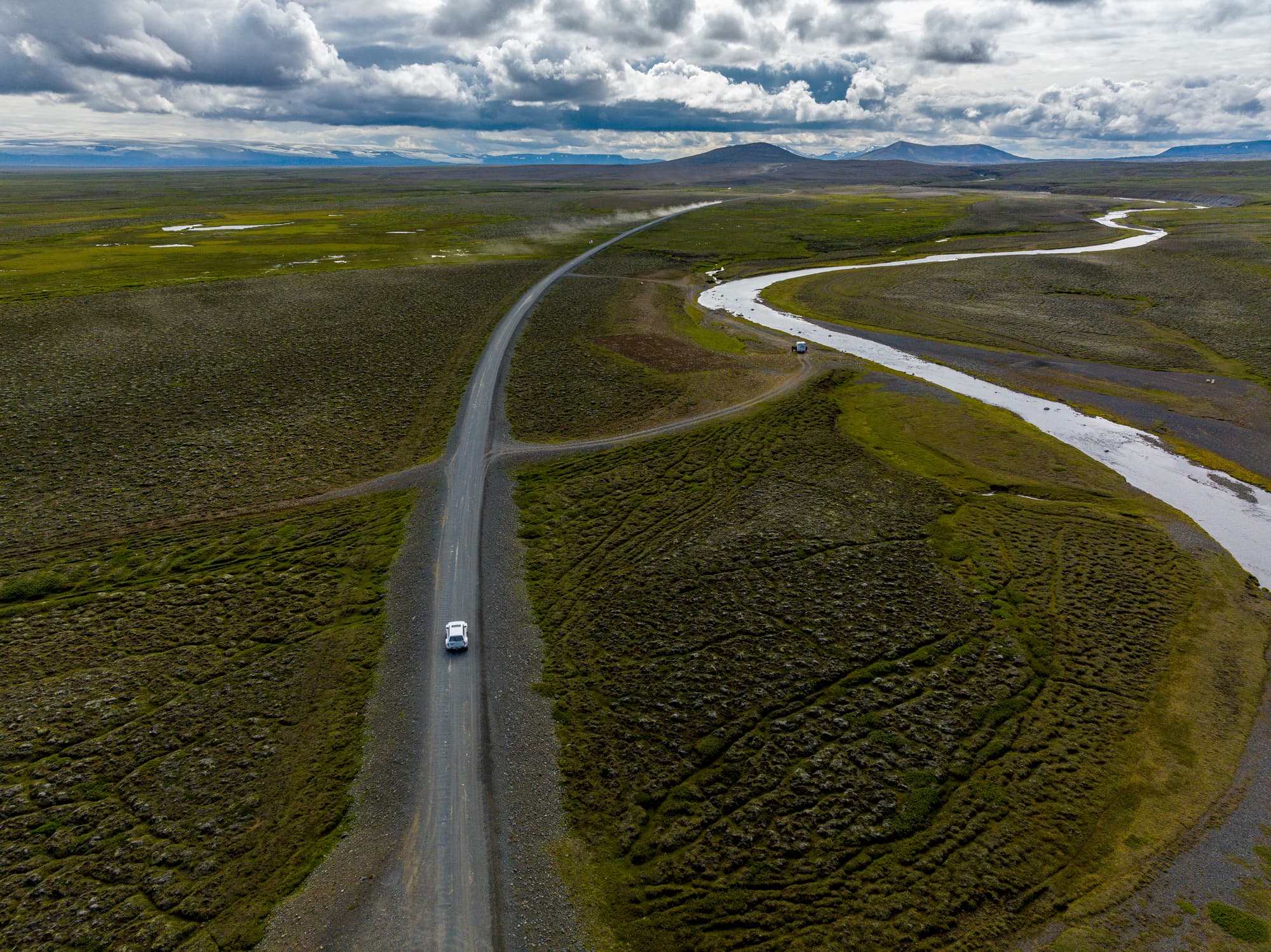
Kjalvegur/Kjölur (35), formerly an important route for medieval Icelanders heading to the Althing.

F210, Fjallabak south
Mountain roads (F roads)
The IRCA maintains a system of mountain roads throughout the Icelandic interior, often based on routes used by medieval Icelanders to get to the Althing at Þingvellir, such as Kjölur (35) and Sprengisandsleið (F26.)
A mountain road, or F-road, is usually classified as such if the road is exceptionally uneven, rough and steep, and/or there is one or more unbridged river crossing which travellers must ford. Certain roads, like Kjölur, have lost their F-road designation in recent years due to infrastructure improvements following increased demand.
Travellers who have no or limited experience crossing rivers are encouraged to consult river-crossing guides online, and to practice on smaller rivers before attempting larger ones.
Mountain roads are only open a couple of months a year. Sprengisandsleið does not open fully until early July, and is then only traversable with large, four-wheel drive vehicles and superjeeps. The IRCA asks travellers to respect road opening windows and to not venture into the highlands during off-season without permission, as any traffic before the roads have properly thawed can cause considerable, lasting damage.
More information on mountain roads can be found on the IRCA website here, whilst epiciceland.net also provides a detailed list on their website.
Maintaining the highlands
The Icelandic highlands are among the last remaining places in the developed world where travellers can experience truly undeveloped wilderness, far from urban areas and modern infrastructure. As interest in exploring the highland interior has grown steadily over the years, more challenges have arisen in maintaining the area’s fragile ecosystems and keeping it as pristine as it currently is. Visitors are strongly encouraged to take responsibility for their actions, to refrain from littering, and to ensure that their presence causes as little disturbance as possible to the natural environment. Simple measures, such as sticking to marked trails, avoiding camping in sensitive areas, and respecting wildlife, can make a significant difference in preserving the highlands for future generations.
Unauthorised off-road driving within the highlands is strictly prohibited and carries serious consequences under Icelandic law, including prosecution, substantial fines, or even imprisonment, as outlined in the Nature Conservation Act #60/2013. Travellers are urged to plan carefully, follow all official guidance, and remain aware that the highlands are a delicate and unique environment where human impact must be minimized.
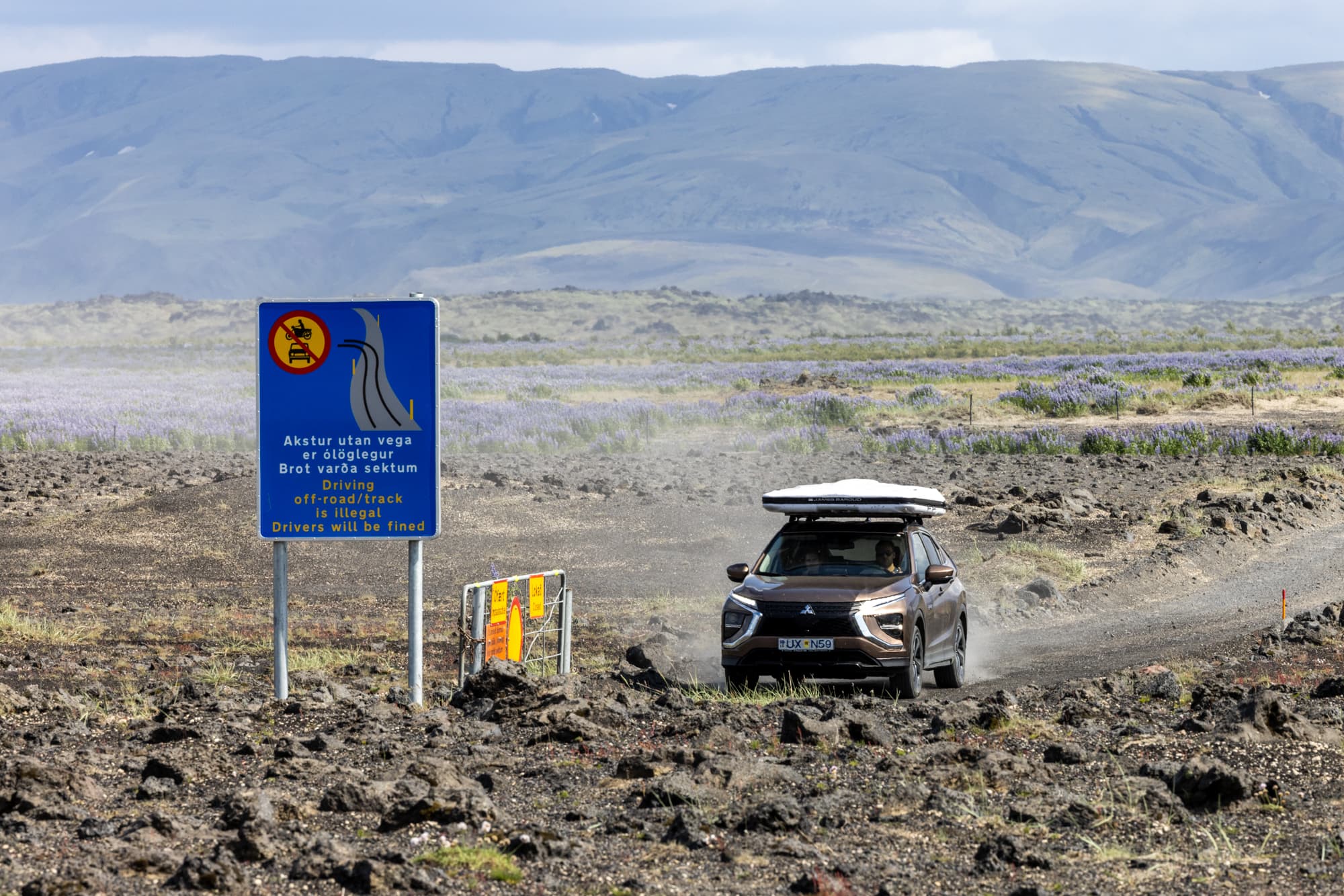
F225 Dómadalsleið



